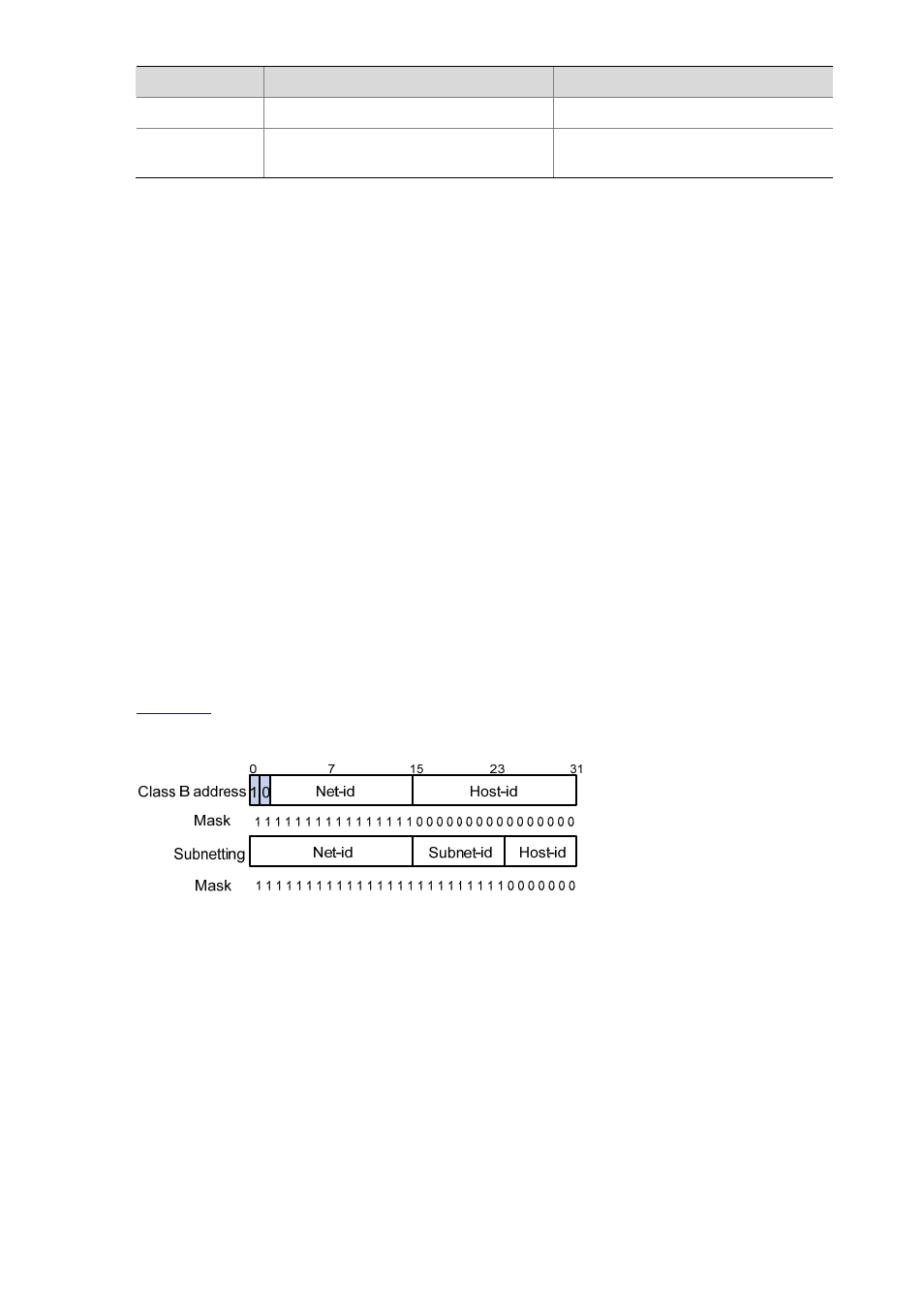Special case ip addresses, Subnetting and masking – H3C Technologies H3C S3100 Series Switches User Manual
Page 110

1-2
Class
Address range
Description
D
224.0.0.0 to 239.255.255.255
Multicast address.
E
240.0.0.0 to 255.255.255.255
Reserved for future use except for the
broadcast address 255.255.255.255.
Special Case IP Addresses
The following IP addresses are for special use, and they cannot be used as host IP addresses:
z
IP address with an all-zeros net ID: Identifies a host on the local network. For example, IP address
0.0.0.16 indicates the host with a host ID of 16 on the local network.
z
IP address with an all-zeros host ID: Identifies a network.
z
IP address with an all-ones host ID: Identifies a directed broadcast address. For example, a packet
with the destination address of 192.168.1.255 will be broadcasted to all the hosts on the network
192.168.1.0.
Subnetting and Masking
Subnetting was developed to address the risk of IP address exhaustion resulting from fast expansion of
the Internet. The idea is to break a network down into smaller networks called subnets by using some
bits of the host ID to create a subnet ID. To identify the boundary between the host ID and the
combination of net ID and subnet ID, masking is used.
Each subnet mask comprises 32 bits related to the corresponding bits in an IP address. In a subnet
mask, the part containing consecutive ones identifies the combination of net ID and subnet ID whereas
the part containing consecutive zeros identifies the host ID.
shows how a Class B network is subnetted.
Figure 1-2 Subnet a Class B network
While allowing you to create multiple logical networks within a single Class A, B, or C network,
subnetting is transparent to the rest of the Internet. All these networks still appear as one. As subnetting
adds an additional level, subnet ID, to the two-level hierarchy with IP addressing, IP routing now
involves three steps: delivery to the site, delivery to the subnet, and delivery to the host.
In the absence of subnetting, some special addresses such as the addresses with the net ID of all zeros
and the addresses with the host ID of all ones, are not assignable to hosts. The same is true of
subnetting. When designing your network, you should note that subnetting is somewhat a tradeoff
between subnets and accommodated hosts. For example, a Class B network can accommodate 65,534
(2
16
– 2. Of the two deducted Class B addresses, one with an all-ones host ID is the broadcast address
and the other with an all-zeros host ID is the network address) hosts before being subnetted. After you
break it down into 512 (2
9
) subnets by using the first 9 bits of the host ID for the subnet, you have only 7